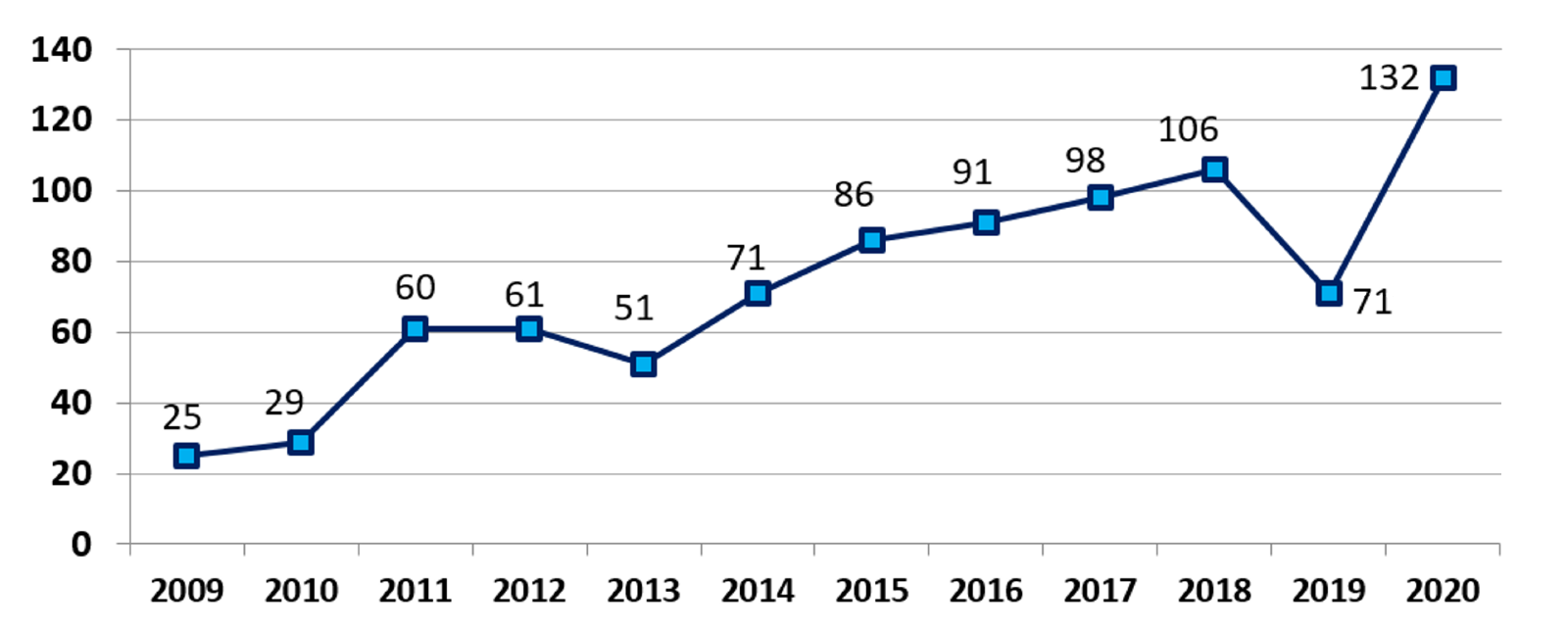Reflections on a Record Year for Novel Device Innovation Despite COVID-19 Challenges

By: Jeff Shuren, M.D., J.D., Director, Center for Devices and Radiological Health (CDRH) and William Maisel, M.D., MPH, Director, Office of Product Evaluation and Quality, CDRH
As we look ahead this year, it is important to pause and reflect on the important milestones the U.S. Food and Drug Administration reached in 2020 to help strengthen the public health. Among those milestones is the work the FDA’s Center for Devices and Radiological Health (CDRH) accomplished in response to the COVID-19 pandemic, while keeping up with the Center’s ongoing work and continuing to bring a growing portfolio of innovative devices to patients. Most notably, the FDA approved, cleared, or authorized (“authorized”) a record high of 132 novel medical devices in 2020, surpassing the 40-year high mark we set in 2018 and capping off 10 years of progress. It is a big leap from the 29 novel devices we authorized a decade ago, in 2010.
Novel devices include those brought to market through the premarket approval (PMA), humanitarian device exemption (HDE), and De Novo pathways, as well as a subset of those that are brought to market with 510(k) clearance or Emergency Use Authorization (EUA). Of the thousands of 510(k) clearances every year, the FDA considers only those devices with a breakthrough designation to be novel. In addition, in 2020, we are including first-of-a-kind devices authorized under our EUA authority as novel devices. Novel or innovative does not simply mean “new.” They address an unmet need, or may be safer or more effective than currently available alternatives. For FDA-approved and FDA-cleared medical devices, innovation, and safety are two sides of the same coin.
While there are various factors that contributed to the record number of novel medical devices authorized in 2020, the one that stands out the most is the boundless dedication of CDRH staff. The continued engagement between staff and device manufacturers early in the development process made it possible for the FDA and industry to accomplish so much for patients.
Some novel devices authorized in 2020 include:
- The first game-based digital therapeutic to improve attention function in children with attention deficit hyperactivity disorder
- An anterior cruciate ligament (ACL) implant as an alternative to ACL reconstruction to treat ACL tears
- The first continuous renal replacement therapy device for a lower weight pediatric population with sudden or temporary loss of kidney function or fluid overload
- The first liquid biopsy next-generation sequencing companion diagnostic test
- The first cardiac ultrasound software that uses artificial intelligence (AI) to guide the user to capture quality diagnostic images
- The first-of-its-kind automated insulin delivery and monitoring system for use in young pediatric patients
- A high density lipoprotein plasma delipidation system to reduce coronary artery atheroma in certain adult patients
- A high intensity focused ultrasound (HIFU), magnetic-resonance guided, ablation system for the treatment of osteoid osteomas, a type of tumor, in the extremities
As shown in the graph below, the number of novel devices has generally increased over the past decade.
Novel Devices Authorized Per Calendar Year 2009 - 2020
While the number of novel devices seen in 2020 cannot be attributed to any single factor, we know that the volume of EUAs for novel devices issued in 2020 played a role. Of the 625 EUAs the FDA issued for medical devices in 2020, such as tests and sample collection devices, personal protective equipment (PPE), ventilators, and other types of devices as part of our COVID-19 response, several were issued for novel medical devices, including these novel in vitro diagnostic devices for COVID-19:
- First sample pooling in diagnostic testing for COVID-19
- First Test for Screening of People Without Known or Suspected COVID-19 Infection
- First Combination Diagnostic Test for detection and differentiation of the viruses that cause flu and COVID-19
- First diagnostic test where results can be read directly from testing card
- First point-of-care (POC) tests:
- Home use tests:
These examples demonstrate the remarkable ability of the device ecosystem and the FDA to adapt and respond to emerging public health needs.
The FDA is undertaking numerous activities related to device innovation. CDRH recently launched the Digital Health Center of Excellence to advance the development and FDA review of cutting-edge, digital health technologies. We also continue to work through the Breakthrough Devices Program to provide breakthrough designation upon request to eligible devices, of which there are now over 400 devices. This designation offers an opportunity to interact with the FDA early and more extensively to address topics as they arise during the device development, evaluation, and premarket review phases. The FDA has now approved, authorized, or cleared 23 breakthrough devices through the PMA, De Novo or 510(k) pathway. Programs like these facilitate more rapid progress of innovative devices through the regulatory process, advancing CDRH’s vision that patients in the U.S. will have access to high-quality, safe, and effective medical devices of public health importance first in the world.
In 2021, work related to COVID-19 will remain our top priority. Although it is impossible to predict with certainty what the future will bring and whether the innovation pipeline in the U.S. will remain strong, CDRH will continue to adapt and shift resources to best protect and promote the public health.
For regular updates on CDRH’s efforts and the FDA’s COVID-19 response, please visit: www.fda.gov/medical-devices.



